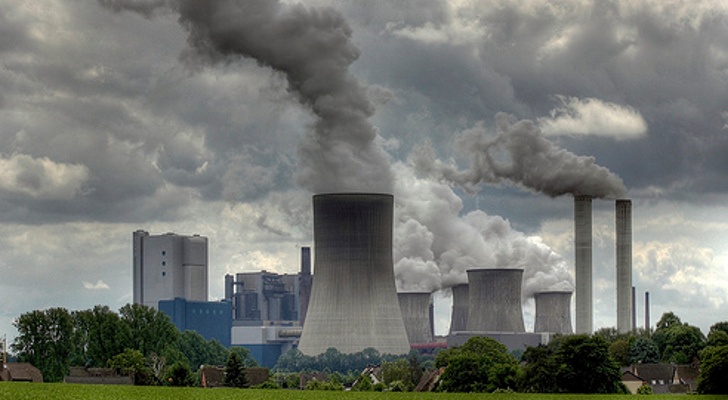
We know that people sometimes tend to panic first and worry about verifying news they read (or hear) later. Take for instance the story of the gang that hangs around in parking lots, conning people to test its ‘perfume’ samples, which turn out to be chloroform. The victims are then drugged and kidnapped. Various versions of this story have been circulating for years, and while it has been refuted more than once, people still forward warnings on… just in case.
Today we take a look at power stations and their effect on their environment. Unfortunately, you won’t find this as a news item under Snopes, or similar myth-busting site. The negative effects of these are real and serious. Here’s how they affect us all.
A power plant can affect the environment by its construction AND its operation
These effects will either be temporary or permanent and will include the following:
- It and its auxiliary components take up space
This includes natural gas pipelines, water intakes and discharge, coal delivery and storage systems, new transmission lines and waste disposal sites. This is both on ground and in the air. The plant’s footprint on the ground eliminates opportunities for others to purchase or use the land. It can also affect the existing or future uses of adjoining and nearby land parcels. A coal-fired plant includes some relatively tall buildings and high exhaust stacks. The plant’s height may result in safety concerns for aircraft or visual impacts for local landowners.
- It affects the surrounding land use, soils and wildlife
This is certain to happen if the land to be used for the power plant is a ‘greenfield’ – an undeveloped parcel with mostly vegetation (crops, pasture, or old-field vegetation).
- It affects the quality of air
Power plants burn fossil fuels. Coal-fired plants, even with the most modern technology using low-sulphur coal, are the single-most significant source of acid rain, which has left hundreds of lakes unable to sustain life. Acid rain is also causing profound changes in forest ecology. Nitrogen oxides (NOx) from power plants vie with automobiles as the leading causes of smog, which affects the health of millions of people. Power plants emit mercury, a neurotoxin that is now found in all our waterways, as well as millions of tons of carbon dioxide (CO2), the most significant greenhouse gas and contributor to global climate change. These plants also emit:
- arsenic
- beryllium
- cadmium
- chromium, and
- It affects the quality of water
Power plants use millions of gallons of water for cooling, every day. As this water is discharged back to the water source, thermal (heat) pollution occurs. This plume of warmer water can create ice-free pockets in winter, which can attract and then trap many species when the flow slows or stops. In summer, the hot water can add to eutrophication (oxygen-deficiency) in the river, choking fish and aquatic life. Heavy metals and chlorine in cooling water discharges are also having a negative effect on river life.
- It kills fish
Rivers are often estuarine nurseries for many ocean fish species. There are millions of tiny fish eggs, larvae, and very young fish essentially adrift in the water, and therefore extremely vulnerable to power plant cooling water intakes. These small animals are often killed by the passage through a plant´s cooling system. In certain species, reports document up to 60% mortality in a given year’s newborn fish stock due to power plants. Adult fish are also trapped and pinned to intake screens by the force of the suction.
- It affects scenic, historic and cultural resources
Power plants are massive industrial complexes, with buildings, stacks, and other structures on a scale that often dwarfs everything nearby. Because of this, power plants can be seen from far away, and they can irreparably harm view sheds that are highly valued by society. Nearby homes and sites of historic significance are devalued because of the plant’s inappropriate size, use, and architecture. Cooling tower plumes, while only water vapour, create yet another visual impact that many communities find troubling.
- It still depends on fossil fuels
Each new power plant makes more power available to the marketplace. As long as energy is readily available from fossil fuels, society has few incentives to conserve or to find more sustainable substitutes. Feeding short-term demand by increasing fossil fuel power production does not provide a long-term solution. Conservation, energy efficiency increases, and development of renewable power sources are the only real ways to break our unsustainable energy consumption and production cycles.
- It can add to noise pollution
There can be high noise levels due to the release of high-pressure steam and the running of fans and motors.
- It generates a high volume of dangerous waste
In the case of nuclear power stations, the solid high-level waste from nuclear power stations is hot and very radioactive, so must be isolated from people and the environment indefinitely. It is stored for 40–50 years, while the radioactivity decays to less than one per cent of its original level. Then it is finally disposed of deep underground, well away from the biosphere.
- Its current siting process doesn’t protect communities or the environment
No new power plant is going to be accepted by every member of a host community, and there will always be some opposition. But developers and their allies dismiss the legitimate concerns of local residents with accusations of ‘not in my backyard’, raising larger-scale policy concerns associated with plant siting.
Too often, plants are sited in poor communities, or communities of colour. Old industrial sites – preferably outdated, dirty power plants – should always be the site of choice over a ‘greenfield’ (a site that is in its natural condition). The universe of community concerns, including environmental and health-related issues, must never be dismissed without an extremely compelling case for power.
- It creates secondary effects from pipelines, power lines, development and extraction
Where power plants go, high-voltage power lines will soon follow, marching unopposed across the landscape with the right of eminent domain. Natural gas pipelines, and increasingly, port facilities will have to be built to serve the new generation of clean-burning combined-cycle gas turbines. And where both gas and electricity become available, development follows, leading regional planners to become concerned about new corridors of development and sprawl. Finally, in considering the ‘life-cycle’ impacts of fossil fuel use, we must also acknowledge the profound environmental, health and social effects of fossil fuel extraction, from wells to pipelines to refineries.
Sources:
https://psc.wi.gov/Documents/Enviromental%20Impacts%20of%20PP.pdf
http://www.clearwater.org/news/powerplants.html
https://www.slideshare.net/MrMrunalRaut/environmental-impact-of-emission-of-power-plants





